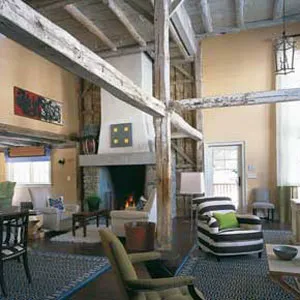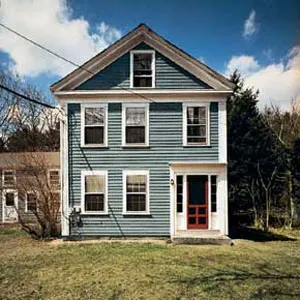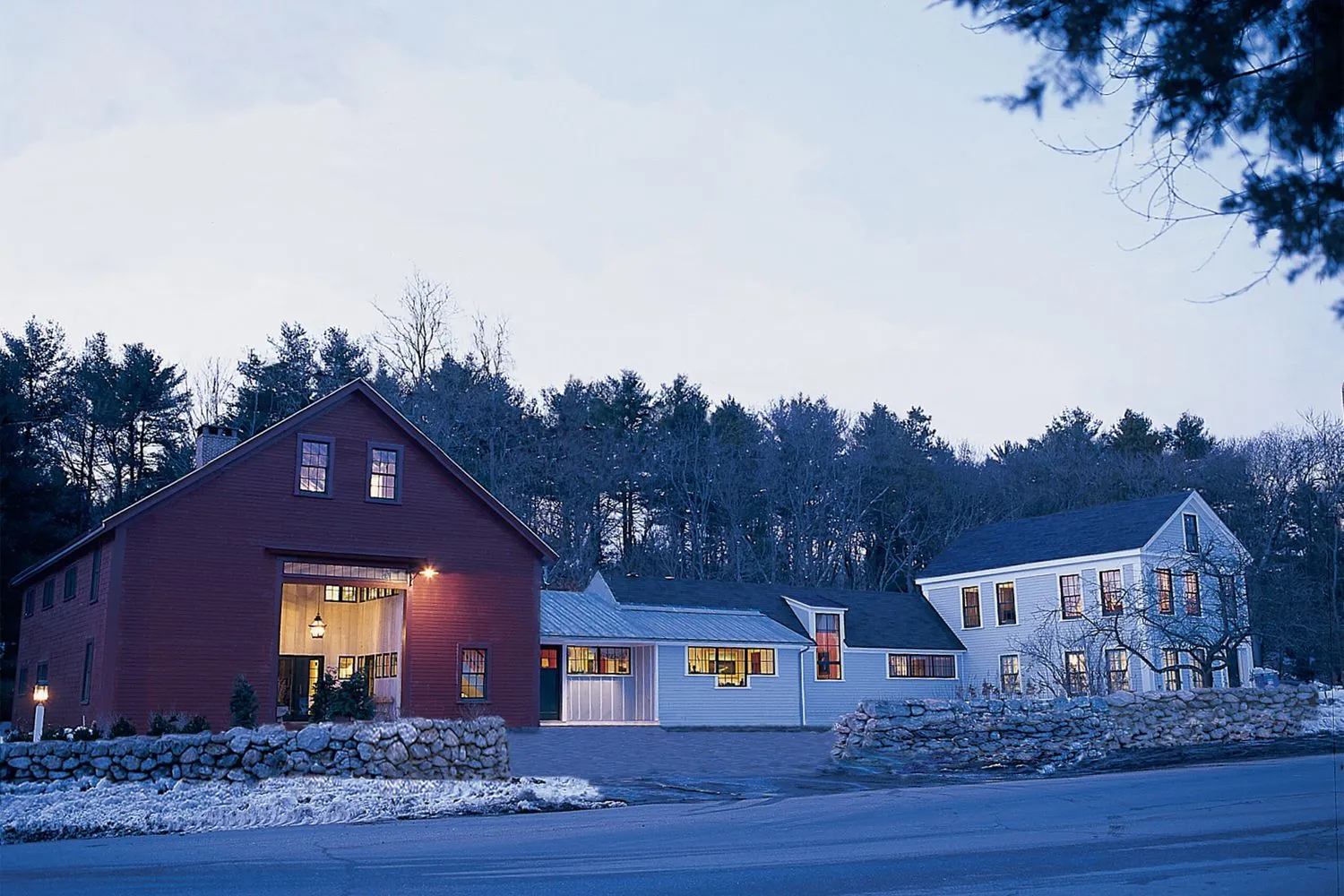
Tom Silva had a long list of little projects that would put the final touches on the Carlisle house. At the top of the list is locating all the air conditioning registers in the floating floor so they can be connected to the ductwork. “The house won’t have any air conditioning otherwise,” he explains.
As big a job as that was, Tom, of course, kept his cool, as he has throughout the entire 10 months of the demanding This Old House 25th anniversary project. Tom and his crew and subcontractors gutted and rebuilt the two-story Greek Revival main structure, reconstructed the ell from scratch (with a factory-built foundation to save time and labor), and remade the barn into a two-story “living hall” with second-floor guest quarters—a very thorough renovation of more than 6,000 square feet of living space. He acknowledged, when pressed, it would have taken 12 to 18 months in the “real” world.” To meet the deadlines necessary for the TV show, Tom says everyone on the construction side put in a lot of extra time. “It was a difficult process,” he allows, “but the TV production schedule doesn’t change, even when the weather’s bad.”
“The scope of this project was massive,” agrees This Old House executive producer Bruce Irving, who’s used to completing two projects every season. “It was like having three jobs going at once. And you could never point to one and say it was done.” So perhaps it’s just as well there were no homeowners to work with, though their input is a signature of the show. “The idea of the This Old House team doing it ourselves and using every aspect of what we’d learned over the years was appealing,” says Bruce. “We had the freedom to explore the design possibilities and to insert all of our favorite stuff, like proper framing, sprayed-in foam insulation, top-quality building products, and radiant floor heating. And we got to push ourselves to try new things like the modular system used in the ell.”

But just because the This Old House team got to call on all its expertise doesn’t mean there wasn’t the occasional complication. For example, the barn, the element of the 1849 homestead that initially charmed the team, ultimately proved quite challenging to restore. “We literally had to pick it up, clean it out, put it back together, and then insulate, wire, and fit it with windows,” Bruce says. “It took a lot before it became the frame for a new building.” The living hall’s Rumford fireplace originally had a massive wood lintel that stretched code restrictions a bit too far—it was eventually replaced with a stone mantel. The ell, too, had its obstacles. Although the prefab wall- floor- and ceiling-system lived up to expectations, attaching it to the other structures was an education. “We learned a lot about tying it together with the out-of-plumb, existing buildings,” Bruce says.
Tom’s long list of finishing tasks included granite countertop, undermount sink and faucet installation in the master bath; installation of a second medicine cabinet—a simple task made complex by an extraordinary design. Made by Tom’s crew, the medicine cabinets feature a 14-inch TV placed behind two-way glass so the picture shines through. In addition, the master tub had to be switched out because of a broken diverter valve. All of the shelves, towel bars, hanger rods, and toilet paper holders had to be mounted. “It’s pretty simple work, but it’s time consuming,” says Tom. “We don’t just slap ’em up. They have to be properly leveled and fastened.” Also on the list: mounting bathroom sconces and door hardware.
All of the custom cabinetry, including the media unit Norm built in the living hall, had to be painted, and fabric put on the inside of the media cabinet’s paneled doors. TVs also had to be mounted and wired.
The laundry room cabinets had to be installed along with custom countertops. Then the washer and dryer had to be hooked up and vented. Since the pipes couldn’t be positioned until the installation, that means another visit from the plumber.

As for the floors, Tom says sixty percent of the thresholds still had to be stained, finished, and placed at every doorway. “We do the saddles the same way they did 100 years ago,” he says, “so they’ll look old and allow the floors to expand and contract beneath.”
Besides the air conditioning, an air-to-air exchanger, or heat recovery system, has to be connected. This system, tied into the HVAC, brings fresh air into the house, and is necessary because houses are built so air-tight these days.
Outdoor projects on the list included the house’s siding and gutters. The garage door, which is the original barn door, is eight inches too short (because the barn now stands eight inches higher than it originally did) and had to be lengthened. This will be accomplished by extending the frame with old lumber and new boards planed to look like old. Once the garage door was done, the stone courtyard could be finished. The substrate is already down, but because of the cold weather, Tom said they’d have to section off areas and warm them with propane heaters to lay the tiles. “This is a part of the project that should be done later—like in June.”
The house’s exterior paint job, and the landscaping, stone wall, and exterior lighting were on Tom’s lengthy list, too. In the meantime, the house is on the market and fans had the rare opportunity to see the craftsmanship of the This Old House team up close and personal when the house opened to visitors as a designer showcase from April 15 to May 29. To ensure the future of tradespeople like Tom, Norm, Rich, and Roger, This Old House, in conjunction with the National Building Museum in Washington, has set up a scholarship endowed with profits from show-house tours, and a portion of the profits from the sale of the Carlisle house.

